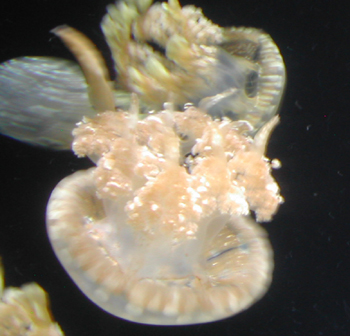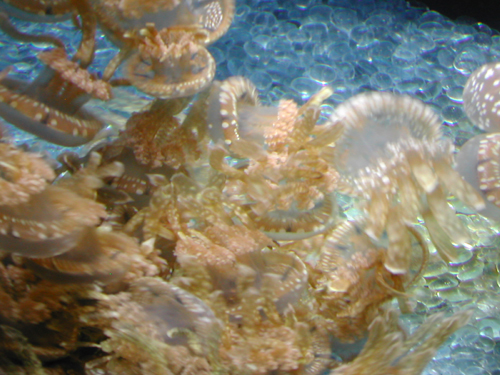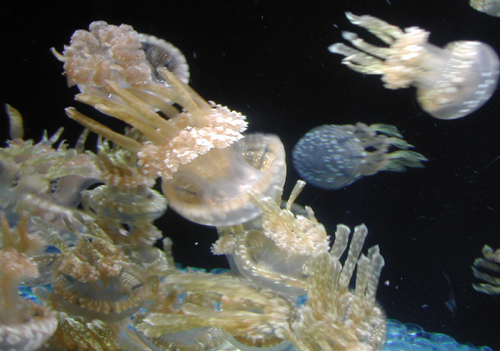
Here are some more jelly pictures from my most recent visit to the Monterey Bay Aquarium. Today, the Spotted jelly (Mastigias papua).
I really like the coloration of these critters, as well as the way that they swim together in patterns that look like a complicated water ballet.
According to the Monterey Bay Aquarium Online Field Guide, those coffee-with-cream colored spots are due to tiny algae called zooxanthellae growing in the jellies. The algae aren’t just cosmetic — they also produce nutrients that feed the jellies, supplementing their zooplankton diet.

If you’re serving as a home to algae that are going to help keep you fed, you’re going to have habits that take care of the algae. During the day, that means soaking up the sun. In order to get plenty of sunlight to feed the algae, the spotted jellies crowd together near the surface of their lagoons or bays — like a beach of sunbathers jostling for the rays, only in the water.

Even at night, the spotted jelly is taking care of the algae, descending to a depth in the water that’s rich in hydrogen sulfide. Here, the jelly can take in plenty of ammonium, which acts as a fertilizer for its algae garden.

The spotted jellies at the Monterey Bay Aquarium are housed by themselves, so I didn’t get to see this myself, but apparently in the wild small fish sometimes swim into the bells of spotted jellies and use them as safe houses to protect themselves against predators. I have a feeling that would look pretty cool (and that the spotted jellies probably don’t have such well-developed nervous systems that they would be alarmed by this).

We were just there last weekend, and we liked the brown jellies and the ones with purple spots. I can send you a picture if you like. 8^).